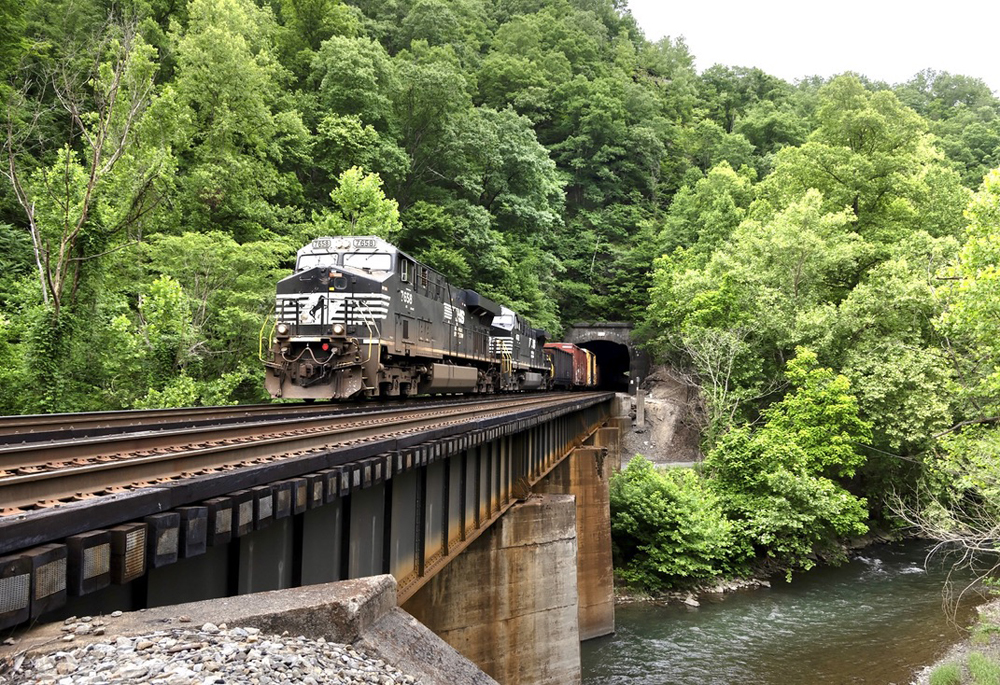
CHARLESTON, W.Va. — Railroads’ success is often defined by service metrics like car dwell, velocity, or the operating ratio. These measurements are snapshots documenting how long railcars idle or how quickly trains move between points. Better velocity means more profitability. These subjects have been a growing part of the conversation since Precision Scheduled Railroading was adapted industry-wide.
In sales and marketing, you use these same service measurements as talking points in customer meetings, but a railroad’s operating performance isn’t the only thing customers care about. It’s important a railcar arrives when it’s scheduled to, but there’s more to it.
As with most big decisions in all aspects of life, cost is important, and customers’ transportation managers are often tasked with finding the most economical solution for his or her employer.
Just because trains are on time doesn’t allow railroads to charge higher rates. Commodities are always changing in value and railroads need to be agile. Quoting an uncompetitive rate on the basis of a superior service offering could cause the most efficient railroad in the industry to lose business. Shippers have options that don’t always necessarily involve the railroad.
After all, trucks are always willing to test a salesperson’s intellectual humility.
That’s why datasets like revenues per unit, or the average per car rate a railroad charges to move a customer’s product, is important. These rates show how sales and marketing professionals manage price in different economic backdrops, or how price — and service — can be leveraged to drive incremental volume through truck conversions and other initiatives.
Ruffling through recent earnings reports indicates railroads aren’t focused solely on price and that’s commendable. After all, and inflation aside, how often do prices go down for your favorite product or service?
For example, Norfolk Southern saw a 3% decrease in overall revenues per unit, meaning its carload rates averaged 3% lower compared to a year ago, but its volumes grew 5% and revenue overall increased 2%. Its intermodal rates were 8% below last year, but volume climbed 8% and revenue was flat.
One could question why it makes sense to move more volume for less money.
In some cases, that is simply what is required to maintain a customer’s business. Sales and marketing directors take price seriously and sometimes decreasing rates in soft markets pays dividends in the long term. And just because the railroad’s average revenue per unit is lower doesn’t always necessarily mean salespeople slashed rates. Instead, it could mean the average number of miles decreased for that specific business unit, or perhaps the rate is tied to a commodity index, in which freight rates ebb and flow with the price of the commodity. As with most things in railroading, one size does not fit all.
But price should be viewed as a tool and a lever that can be pulled to attract volume and build customer rapport. Simply hiking rates by a couple of percentage points each year and pushing out a tariff document without consideration for the market conditions of that business is passive and out of tune. Those habits will ultimately lead to volume erosion and uncomfortable customer relationships.
Instead, the industry, particularly those leaders in sales and marketing, have been provided a divine moment in history where open-mindedness, creative thinking, and collaboration with railroad’s biggest stakeholders — its customers — can drive unprecedented growth.
Class I railroads are running lean in the sense that they have consolidated trains and streamlined operations to focus on fewer, but longer and more punctual trains. Engineer and conductor headcounts are up across most railroads, and as a result of declines in coal and the embracing of distributed power and other PSR-inspired changes, the capacity is there to grow. Now’s the time where operations heads can look at their commercial counterparts and say with confidence, “Let’s go after this business.”
Now’s the time to sit down with customers and figure out how we can help one another. Keep an open mind, pivot as circumstances require, and know just as much about the customer’s business as you do the railroad.
Railroads’ customers are its biggest advocates and stakeholders. Without them, we cease to exist.
— Carload Considerations is a monthly Trains News Wire commentary series. It discusses the freight rail industry, commodities, and economic trends. Its views are the opinion of its author with no particular emphasis on a specific railroad or shipper.














Don’t be overly influenced by one quarter’s numbers. In general, rail rates are lower than truck already. Lowering them more only reduces revenue. Customers will pay more for a high level of service. And trucks don’t even consider rail as a competitor.
Just watch this video – I-80 across Wyoming in winter. Count the trucks. And they aren’t the Big Boys. Hundreds of small company rigs. Running below the radar of the JBHs and Schneiders. https://www.youtube.com/watch?v=ofiMtDP-MkU&t=21540s&pp=ygUfYmlncmlndHJhdmVscyBvZ2FsbGFsYSBuZWJyYXNrYQ%3D%3D
Nicely written, Thank you